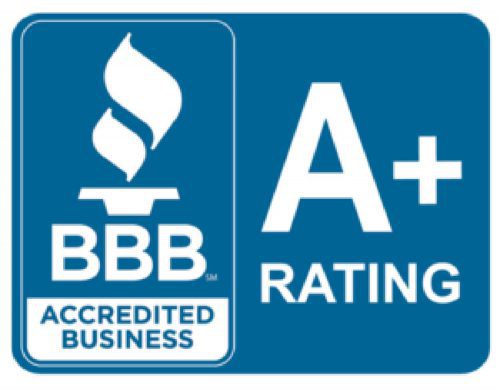Brachial Plexus Palsy
A brachial plexus birth injury occurs when there is damage to the brachial plexus nerves, which is a network of nerves that lie between the head and the shoulders. These nerves are responsible for controlling muscle function throughout the body in places like the shoulders, arms, chest, hands, and feeling in the upper limbs. This type of birth injury happens in one to three out of every 1,000 births, and in a difficult delivery, the nerves could be torn, stretched, or compressed. An injury could result in damage to the muscles in the elbow and shoulder, also known as the upper brachial plexus, or injuries to the forearm muscles and hand, also known as the lower brachial plexus.
A baby will have brachial plexus palsy, also known as Erb’s palsy, if the injury occurred to the upper portion of the brachial plexus. They will have weakness in their shoulder muscles and biceps, as well as a loss of motion, among other symptoms. Erb’s palsy happens if the baby is large or there’s a prolonged labor or a breech presentation. If the healthcare professional delivering the baby has to do so quickly and use force to pull the baby out, the baby’s neck could be stretched and injury may occur. Erb’s palsy is named after Wilhelm Erb, one of the doctors who first described this medical condition.
Symptoms of Brachial Plexus Palsy
If a baby has brachial plexus palsy, then the following symptoms could occur:
- Trouble rotating the arm away from the shoulder
- Loss of sensation or numbness in parts of the arm
- Difficulty bending the arm at the elbow
- A limp arm that is turned in, with the wrest in the waiter’s tip position
- Trouble regulating the temperature of the arm because there’s poor circulation
- Complete or a partial paralysis of the arm
- The arm is pronated, and the palm faces back or down
- Difficulty bending the wrist
- The appearance of Horner’s syndrome, which happens when there’s a droopy eyelid and constricted pupil
There are also associated symptoms that could occur, including:
- Paralysis or muscle weakness, which make it difficult to control arm movement
- A bent elbow because the joint is tight
- Stunted growth in the hand, shoulder, and arm that have been affected
- A loss of sensation
- Deterioration of the affected muscles in the arm
- A lack of grip in the hand because of weakness in the arm
- Pain, discomfort, and cramping
A doctor will have to diagnose your baby with brachial plexus palsy if you believe that’s what they are experiencing.
Treatment for Brachial Plexus Palsy
Treatment for brachial plexus palsy will depend on the severity of the injury. If your baby has a mild injury, and the upper and middle nerve trunks are affected, then the nerves could simply repair themselves in a short matter of time after birth. Typically, most babies born with brachial plexus palsy will recover on their own. Healing could last just three months or it could take up to two years.
If the injury is more severe, and the nerve has been ruptured or is completely severed from the spinal cord, then surgery may be required. With surgery, your baby will hopefully be able to move and feel their arm once again.
Daily physical therapy may also be required. These sessions may begin when your baby is around three weeks old and could include a range of motion exercises for the wrist, elbow, hand, and shoulder. These exercises will stop the joint from becoming permanently stiff.
How Do I Know if Medical Malpractice Caused Brachial Plexus Palsy?
If a healthcare professional used too much force with their hands when delivering your baby or they used forceps with too much force and that caused your baby’s brachial plexus palsy, then you could have a medical malpractice lawsuit on your hands. Additionally, if you needed a C-section and the healthcare professional didn’t perform one or waited until it was too late, and then delivered the baby by force, then it might qualify as medical malpractice.
Keep in mind that the legal system makes it difficult to bring about a medical malpractice case because if it were easy to sue healthcare professionals, no one would want to take up the profession. That’s why it’s recommended that you hire a birth injury malpractice lawyer who has experience with brachial plexus palsy cases. They will let you know if they think you have a case and, if so, how you’ll go about demanding a settlement.
How Much Will I Receive From a Brachial Plexus Palsy Settlement?
If medical malpractice did occur, then you could receive a settlement for your baby’s brachial plexus palsy. You could win damages for:
- Medical bills
- Loss of companionship and enjoyment of life
- Pain and suffering
- Future medical care
- Loss of earning capacity
Usually, the higher your costs are, the higher your settlement will be.
Settlement Offers in a Brachial Plexus Palsy Case
When you contact a birth injury lawyer, they will ask you about the details of your case and work to collect your medical records and other evidence of the alleged medical malpractice. This could include witness statements and photographs.
Your lawyer will then get in touch with the defendant, whether it’s a doctor, a nurse, a hospital, or another type of healthcare professional, and then attempt to work out a settlement offer. Once they secure an offer, they will let you know what it is and you can decide to either accept it or ask your lawyer to renegotiate for a higher offer.
If your lawyer tries to renegotiate but the defendant is not willing to, then your lawyer will take the case to court. As the court date approaches, the defendant may recognize how strong your case is and then may offer you a suitable settlement. If you do end up going to court, your lawyer will do the bulk of the work by presenting the evidence and bringing in an expert witness, if needed. This witness will be a healthcare professional with a comparable background to your provider. After seeing all the evidence, the court will decide if you deserve a settlement and, if so, what that settlement will be.
Why Reach Out to a Birth Injury Lawyer?
A birth injury lawyer has experience with these types of cases. They will work hard to get you the settlement you deserve, and you can focus on treating your child. You shouldn’t have to front the costs of your child’s healthcare or worry. A lawyer will handle everything and give you some much-needed peace of mind during this difficult time.
Brachial Plexus Palsy Birth Injury Attorneys
If your baby has brachial plexus palsy and you believe it was caused by medical malpractice, then it’s time to seek out compensation. The birth injury attorneys at Gilman & Bedigian are here for you and will fight to get you what you deserve.
Contact Gilman & Bedigian 24/7 for a free consultation at (800) 529-6162.











